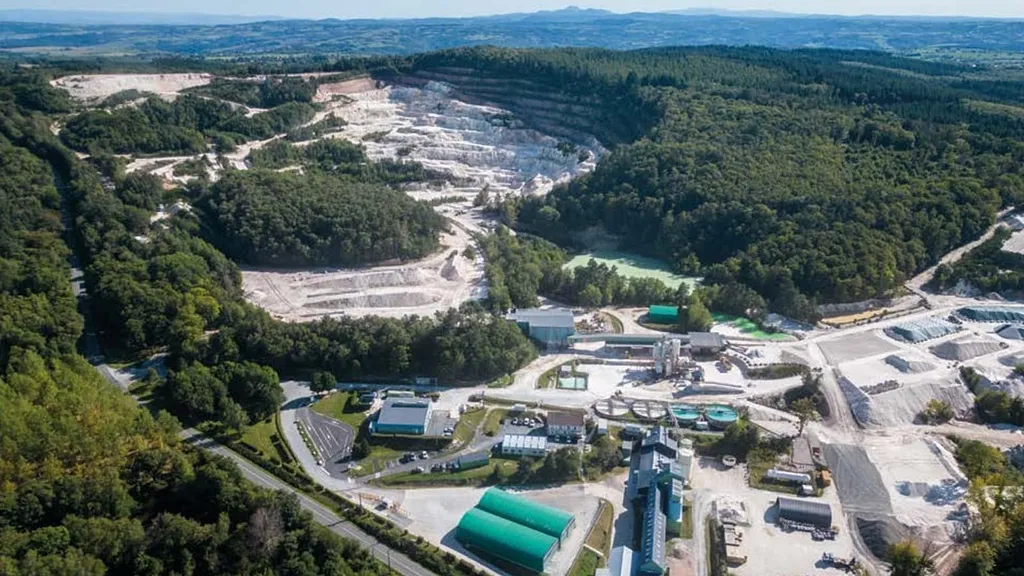In the quest for sustainable and efficient lithium extraction, a novel approach has emerged that could reshape the energy sector’s landscape. Researchers, led by Sara El Hakim from the Université de Lorraine CNRS GeoRessources in Nancy, France, have published a study in the journal MetalMat (translated to English as MetalMat) that explores an innovative method for lithium recovery from spodumene, a lithium-bearing mineral. This research could significantly impact the energy sector, particularly as the demand for lithium continues to surge due to the growing popularity of electric vehicles and energy storage systems.
Traditionally, the extraction of lithium from spodumene has relied heavily on sulfuric acid leaching, a process that, while effective, raises environmental concerns due to the generation of significant amounts of acidic waste. El Hakim and her team have investigated an alternative approach using organic acids, specifically maleic acid, to extract lithium more sustainably.
“The use of organic acids like maleic acid offers a more environmentally friendly alternative to sulfuric acid,” El Hakim explains. “Our study demonstrates that maleic acid can achieve promising leaching performance under specific conditions, paving the way for a greener extraction process.”
The research delves into the effects of various parameters on leaching efficiency, including maleic acid concentration, solid-to-liquid ratio, time, and temperature. The findings reveal that using 2 mol L−1 maleic acid at 110°C with a solid-to-liquid ratio of 80 g/L can effectively extract lithium from spodumene. Following the leaching process, the team neutralized the solution at pH 13 with sodium hydroxide to remove impurities such as magnesium, manganese, iron, silicon, and aluminum.
To further purify the lithium-containing leachate, the researchers employed solvent extraction using 30% (v/v) Cyanex 936P diluted in kerosene. Cyanex 936P is known for its high selectivity for lithium, making it an ideal choice for this application. After stripping the lithium with 2 mol L−1 HCl, the resulting solution can undergo classical precipitation steps to remove calcium and precipitate lithium as lithium carbonate.
The implications of this research are profound for the energy sector. As the demand for lithium continues to grow, the need for sustainable and efficient extraction methods becomes increasingly critical. El Hakim’s approach not only offers a more environmentally friendly alternative to traditional methods but also demonstrates the potential for higher efficiency and selectivity in lithium extraction.
“This research opens up new possibilities for the future of lithium extraction,” says El Hakim. “By combining maleic acid leaching with Cyanex 936P solvent extraction, we can achieve a more sustainable and efficient process that could significantly impact the energy sector.”
The study, published in MetalMat, provides a compelling case for the adoption of organic acids in lithium extraction processes. As the energy sector continues to evolve, the need for innovative and sustainable solutions becomes ever more pressing. El Hakim’s research offers a glimpse into the future of lithium extraction, one that prioritizes environmental sustainability and operational efficiency.
In the broader context, this research could influence the development of new technologies and processes in the field of hydrometallurgy. The successful integration of maleic acid leaching and Cyanex 936P solvent extraction could set a precedent for future studies, encouraging further exploration of organic acids and selective extractants in mineral processing.
As the energy sector continues to grapple with the challenges of meeting growing demand for lithium, the insights gained from this research could prove invaluable. By providing a more sustainable and efficient alternative to traditional extraction methods, El Hakim’s work could help shape the future of the energy sector, ensuring a more environmentally friendly and economically viable path forward.

